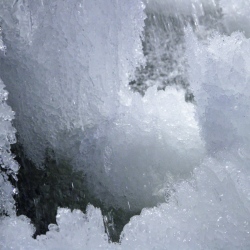
Although we’ve suspected that water exists on Mars in some form since the 1970s, and although we know that Mars used to have plentiful liquid water on its surface, this is the first proof that in small, seepy form, it still might. This result is a game-changer for four main reasons.
It means that Mars is currently more habitable than we thought. That doesn’t mean anyone inhabits it (even anyone microbe-sized). But it does mean that the Red Planet isn’t a total desert of death, and perhaps organisms we consider extreme could live in these wet areas. “Everywhere we go [on Earth] where there’s liquid water, we find life,” Jim Green, the director of Planetary Science at NASA’s headquarters in Washington, DC, said in a presentation. “We haven’t been able to answer the question “Does life exist beyond Earth?” but following the water is critical to that.” And now we know where the water is (or might be).
The water could become a resource for future travelers. Like Earthbound humans, they will need a source of water to drink. And if H2O exists already in liquid form, or there could be an underground source, the water could be much more easily accessible than if astronauts had to extract, chip up, and melt ice.
The ingredients in salty water are the same as those in rocket fuel. The H’s and O’s in water could go into propellants. And rocket boosters currently use aluminum perchlorate. Making concoctions on Mars is preferable to dragging them there from Earth, because the lighter a ship is, the easier it is to launch.
Knowing where liquid water is can guide future exploration, for humans and for robots. “We have the ability to go there, ask this question ‘Is there life on Mars?’ and answer it,” said John Grunsfeld, the associate administrator of NASA’s Science Mission Directorate, in his presentation. “Now, this question is not an abstract question but a concrete one we can answer.” Because we now know (or at least strongly suspect) that present-day liquid water exists, we can target the research. Orbiters can spy on water streaks that landers, like the Mars2020 mission (or even Curiosity), could access. And both orbiters and rovers can do more chemical analysis and, hopefully, figure out where the water comes from.
This discovery is another step toward Mars, for humans to make it there, for humans to be able to survive there, and for humans or robots to learn about whether anything else may have once (or may still) roam around the Red Planet.
